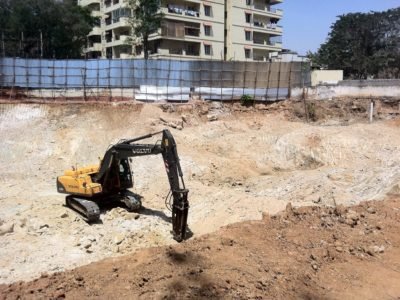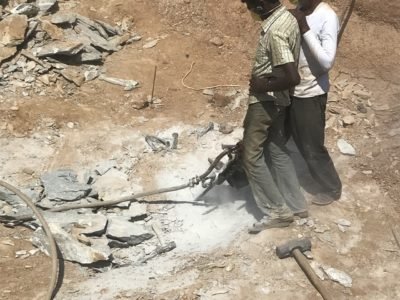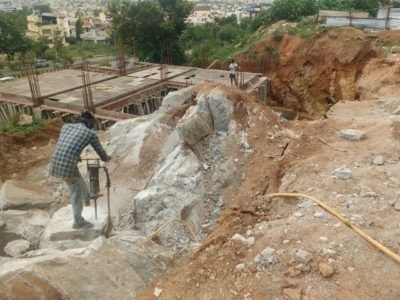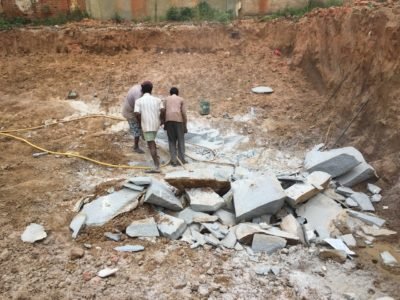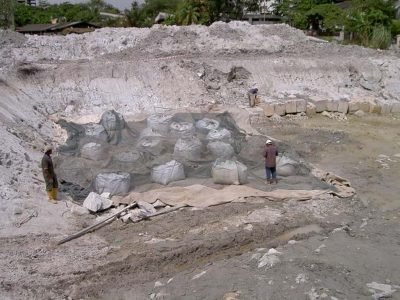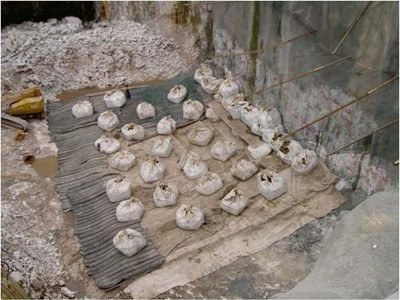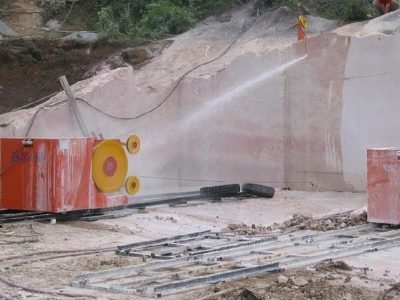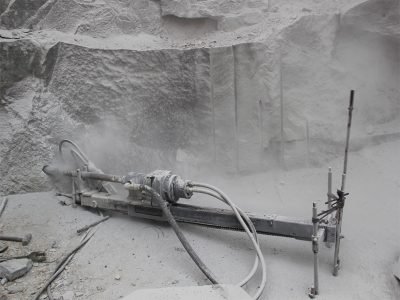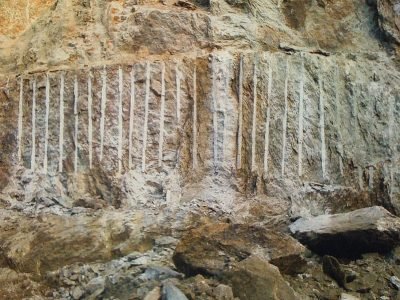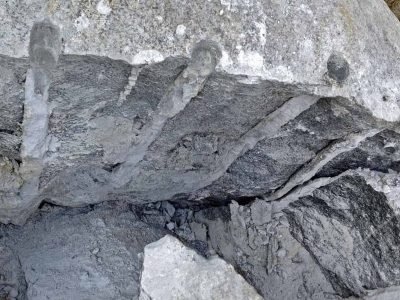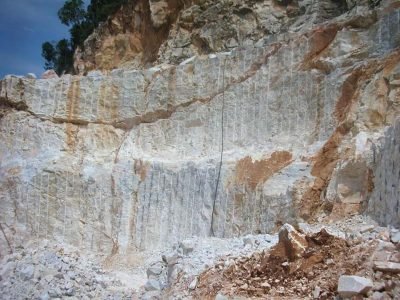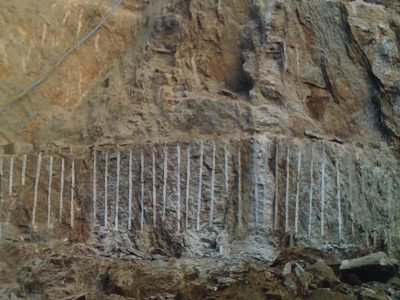Mass rock excavation
Many times excavation in rocks are required for foundation of structure. The procedure for excavation in rocks is different than excavation in ordinary soils. It requires skilled manpower and specialized tools and equipment for excavating the rocky ground.
Excavation in rock requiring drilling and blasting shall be done under coordination of competent and responsible supervision. Prior permission shall be taken wherever necessary for employing such operations.
ROCK EXCAVATION METHODS
Control rock blasting
The blasting sequence & methods employed rock excavation will be submitted for review & approval of Customer.
The blasting operations shall be carried at a pre fixed time ( shall not be changed till all blasting operations are completed in the project ) with all safety precautions. The loosened rock shall be removed using excavator & stored at designated areas.
Relevant permissions will be obtained from the designated authorities before work start.
Approval from the authorities will be obtained for storage of explosives.
All blasting and handling of explosives shall be carried out by a licensed blaster as per the guidelines of Mining department.
Safety Measures for control rock blasting :
- In the areas where the fly rock needs to be controlled, the charged boulders will be covered using a metal plate, used tyres and Sand Bags.
- Drilling direction will be selected in accordance to avoid Fly Rock flying on to surroundings.
- Warning Procedure to the Resident, Workers and Any Other Parties
- Siren will be used before the blasting start.
- Closing of all entrance before blasting.
Diamond rope cutting :-
The technology is considered a safe alternative for rock cutting in residential colonies.
In the first step a three-inch wide hole is drilled into the terrain using an LD-4 machine which works on a 350 HP compressor.
The holes are drilled up to 60 feet longitudinally and then vertically depending upon the need in such a way that they align at a point.
Once the drilling work is done the diamond rope is passed from one end of the hole and brought out through the other. It is then tied around the diamond wire saw and the machine does the job.
Chemical rock cutting :-
Holes are drilled in the base rock as they would be for use with conventional explosives. A slurry mixture of the non-explosive demolition agent and water is poured into the drill holes. Over the next few hours the slurry expands, cracking the rock in a pattern somewhat like the cracking that would occur from conventional explosives.
Non-explosive demolition agents offer many advantages including that they are silent and do not produce vibration the way a conventional explosive would.
Hydraulic Splitter :-
Holes are drilled to a specified diameter and depth using an ordinary rock drill. Then the wedge set is inserted into the hole with the wedge in a retracted position. The hydraulic pressure then forces the wedge between the two counter wedges, pressing them against the walls of the drilled hole. The effective splitting force breaks the concrete or rock from the inside.
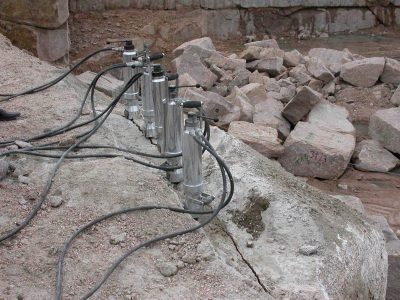
Hydraulic rock breaker :-
The Hydraulic Breaker is an attachment on an excavator and works on the principle of hydraulics that is used for the demolition of a structure and breaking rocks into smaller sizes.
